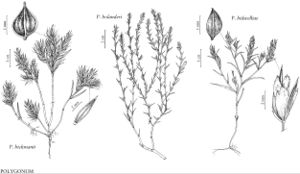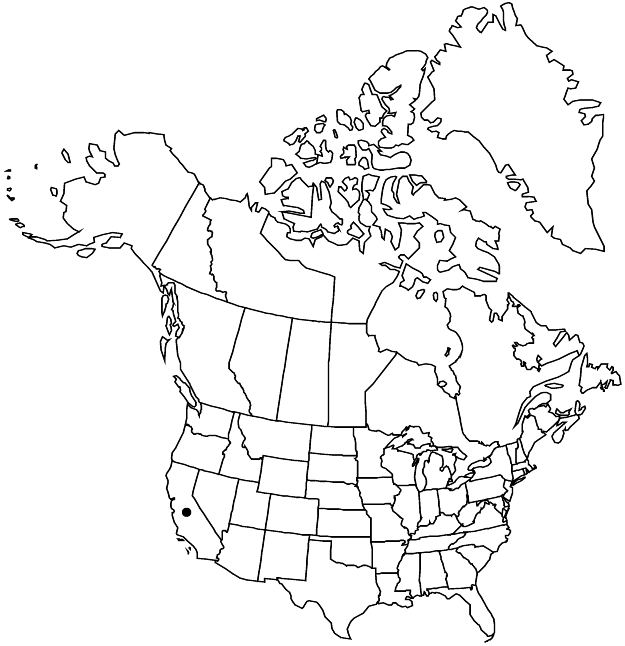Difference between revisions of "Polygonum bolanderi"
Proc. Amer. Acad. Arts 8: 400. 1872.
FNA>Volume Importer |
FNA>Volume Importer |
(No difference)
| |
Revision as of 22:32, 16 December 2019
Shrubs. Stems erect, brown, simple, wiry, gnarled with age, 20–60 cm, glabrous. Leaves crowded at branch tips, not articulated to ocreae, basal leaves caducous or persistent, distal leaves abruptly reduced to bracts; ocrea 6–10 mm, glabrous or papillose-scabridulous, proximal part cylindric, distal part silvery, deeply fringed, disintegrating; petiole absent; blade 3-veined, without pleats, linear to subulate, 3–15(–25) × 0.4–1.5 mm, margins flat, smooth, apex acuminate to spine-tipped. Inflorescences axillary; cymes in distal axils, 1–2-flowered. Pedicels absent. Flowers semi-open; perianth 2.6–3.2 mm; tube 18–33% of perianth length; tepals overlapping, ± recurved, uniformly white to pink, petaloid, elliptic-oblong to obovate, navicular, apex rounded; midveins unbranched; stamens 8. Achenes enclosed in perianth, light brown, lanceolate to oblong-ovate, 2.5–3 mm, faces subequal, shiny, smooth.
Phenology: Flowering Jun–Nov.
Habitat: Open, dry, gravelly, rocky places
Elevation: 300-1500 m
Discussion
Polygonum bolanderi is known from several counties in northwestern California (Butte, Napa, Shasta, and Sonoma).
Selected References
None.

